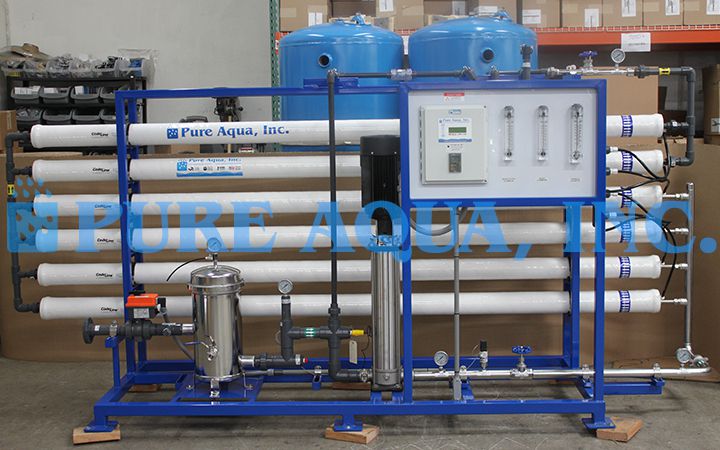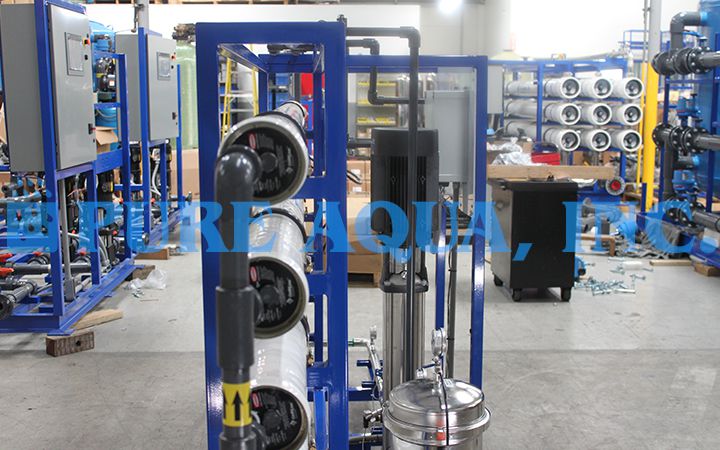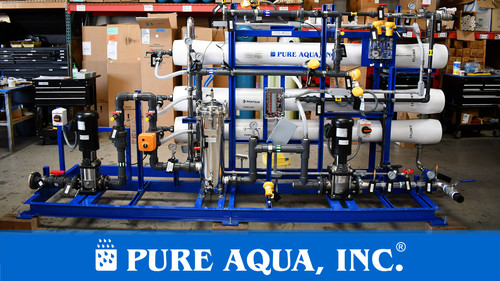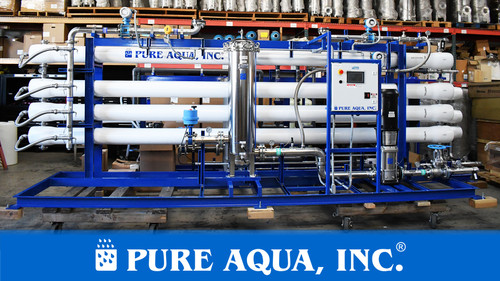Application: Water Hardness Reduction
This is model NF-27K-6340 from our NF-300 Series.
- Epoxy coated carbon steel tanks
- Advanced PLC control panel
- Butterfly actuated valves
- PVC piping
- High quality media
- Differential pressure switch & gauge
- Drain line flow controls
- MF-1000 series
- MLF60A 60" diameter tanks
Nanofiltration systems are used for the removal contaminants from water sources, and are commonly used for desalination. Nanofiltration (NF) is a cross-flow filtration technology that falls between ultrafiltration (UF) and reverse osmosis (RO). The membrane has about a 1 nanometre nominal pore size. Nano filter membranes are usually rated by molecular weight cut-off (MWCO) instead of nominal pore size. The molecular weight cut-off is usually less than 1000 atomic mass units (daltons). The pressure drop across the membrane (transmembrane pressure) required is lower than the one used for a reverse osmosis system leading to a significant reduction in operating cost. Nano filter membranes are still faced with scaling and fouling, therefore, antiscalants are highly recommended for use. Nanofiltration (NF membrane) functions similarly to reverse osmosis or RO membrane, but is generally targeted to remove only divalent and larger ions. Monovalent ions such as sodium and chloride will pass through an NF or Nano filtration membrane, therefore many of its uses involve de-salting of the process stream. In the production of lactose from cheese whey, for example, NF filtration system concentrates lactose molecules while passing out salts, a procedure that purifies and concentrates the lactose stream. In water treatment, NF membranes are used as a softening membranes for hardness removal (in place of water softeners), pesticide elimination, and color reduction. It can also be used to reclaim spent Sodium Hydroxide NaOH solutions, in which case the permeate stream is purified NaOH, allowing reuse many times over.
[custom-specifications]
Water Challenges: The issue of scaling is a common problem for nanofiltration operators. Scaling is formed from the presence of water hardness, which is created from substances such as calcium and magnesium in high concentration within water. Without the removal of these hardness creating substances, nanofiltration systems will be left open to scaling and will result in an overall reduction in performance, longevity, and cost-effectiveness.
[/custom-specifications]
[custom-features]
Applied Solution: Pure Aqua, Inc. designs and manufactures water treatment systems in addition to reverse osmosis systems. This reverse osmosis system is more specifically called a nano filtration system and operating in Australia. This system was designed to produce a capacity of 27,000 gpd from a well water feed at about 1,000 ppm TDS. Once the water has been filtered by the system it should be at 200 ppm. This particular system included a prechlorination for disinfectant and antiscalant dosing system. A nanofiltration is similar to reverse osmosis but the membranes require less pressure and have poorer rejection for mono-valent ions.
[/custom-features]
[custom-usage]
These systems are manufactured and designed to significantly improve uptime and reduce process water upkeep requirements for various industries.
[/custom-usage]
-
Produces low TDS water
We inspected the product before it got shipped out to us and their engineers walked us up through the process.
 ENGLISH arrow_drop_down
ENGLISH arrow_drop_down
 ESPAÑOL
ESPAÑOL ???????
??????? PORTUGUÉS
PORTUGUÉS FRANÇAIS
FRANÇAIS


















